A good sales letter is the most powerful force in the marketing world.
Everyone from sales reps to business owners can increase their revenue very quickly buy using one. Unfortunately, most of these messages get ignored both online and off.
But the question arises, how do you write one? And more importantly, how do you get it read by the people you are sending it to?
In this guide, I’ll teach you how to write a sales letter part-by-part, so that you’ll be able to write your own dynamic sales letters to make money.
So, climb aboard and hang on, because we have a lot of territory to cover!
Additional Things You Must Know About This Process
To ensure that this is the most thorough lesson you can get on how to write a sales letter, here is a few things you should know:
This Sales Letter Lesson Can Be Used in Different Mediums
Almost all of the different kinds of marketing assets can use the sales letter format I’m about to teach you. For example:
- Direct mail sales letters
- Email sales letters
- Video sales letters scripts
- Sales brochures
- Online advertisements

Other Types of Marketing Can Benefit
These other forms of writing will also benefit from learning the principles of copywriting:
- Content marketing
- Social media marketing
- Telephone sales scripts
- Printed media ads
- Radio advertisements
I understand some of you might be thinking, “I’m a content marketer, do I really need to know this stuff?”
Absolutely! Two of the world’s top bloggers, Neil Patel and Jon Morrow, have mastered the art of writing sales letters by studying them extensively alongside advertisements from famous copywriters.
Even when crafting blog posts or email campaigns, you might deviate from the traditional long-form sales letter format, but the core principles of writing sales copy should be ingrained in your mind.
So, embrace what I’m about to teach you. Not only will it enhance your profitability, but it will also equip you with the fundamentals of effective copywriting for various projects.
You Don’t Have Write Like David Ogilvy to Make Money
Let’s be realistic—you and I will never reach the heights of legends like David Ogilvy, Dan Kennedy, or Gary Halbert. And that’s perfectly fine.
Just do your best.
By studying, writing, and applying these lessons, you’ll be miles ahead of most business people you know. With consistent use over a few years, these principles will become second nature to you.
I’ll Just Hire Someone to Write My Sales Letter for Me
Hey, if you want to hire someone to do it for you, contact me. I’m always looking for work. I’ve been writing copy in one form or another since I was 19 years old and you can see samples of my sales letters in my portfolio.

The Preparation Section
Become Your Target Customer
“You cannot understand someone until you’ve walked a mile in their shoes.”
~Anonymous
To successfully sell to a crowd, you must deeply understand their perspective and where they’re coming from.
Writing a sales letter that resonates with a specific group becomes much easier when you truly know them. This is why targeting a specific item to a well-defined audience is often more effective.
Focus Like a Laser on Your Target Market
Marketing and selling to everyone is actually selling to no one.
And that’s so true. The famous copywriter Gary Halbert famously asked, “Do you know who are the best people to sell hamburgers to? Starving people who like hamburgers!”
The more focused and specific your target market, the easier it will be to write a sales letter that converts into sales.
Guaranteed.
I know some of you are probably thinking, “When is he going to get to the part about writing a sales letter?”
If you skip this crucial part, you’ll waste time writing for people who don’t care about you or your product.
So, this part is vital.

Think of Your Market Like It’s Fishing Gear
Imagine we’re going fishing. We jump into my truck and head to the river and after we get there you cast your bait into the water.
After wasting time and effort, you say, “Hey, I’m not catching anything.”
So, I ask, “What kind of fishing gear are you using?”
You brought all the right gear for lake trout.
However, we’re fishing for salmon, which requires different equipment. Your lures are wrong, your pole should be stronger, and your fishing line is inadequate, among other things.
It’s the same with marketing. If you don’t know your target market, you won’t stand a chance of attracting prospects and making sales.
Key Things to Know About Your Target Market
- Their deepest, most secret desires.
- The thoughts that keep them awake at night.
- The fears they hold
- Trends currently shaping their lives and businesses.
- The kind of language they use
- Who or what makes them angry
- The types of names and similar products they buy
- Several of their daily frustrations
- Competing products or companies that they use
- Names of people who have sold them similar products or services
- Age, gender, and income level
- Their decision-making process
- Preferred devices (mobile, desktop, tablet)
Where You Can Get Demographic Information
Because of online resources, it is so much easier to get this information. Now, AI (artificial intelligence) is able to extract a lot of this data for you by quickly scraping the Internet.
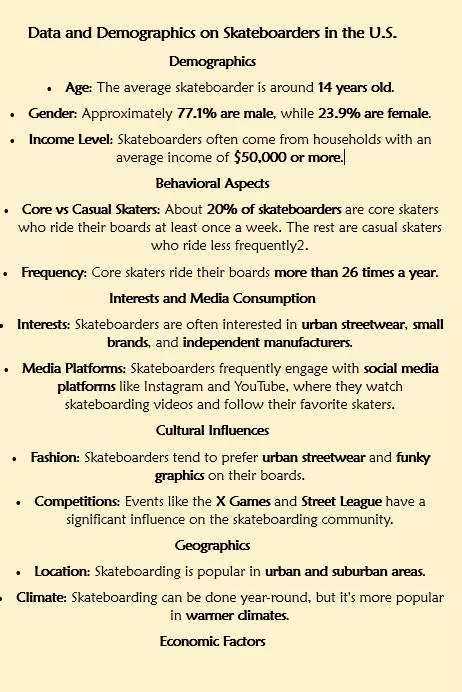
I literally got this information about skateboarders in seconds. But there are a lot of different ways you can get information online that is very valuable.
Here are just a few ways you can get information about your target market or customers:
- Surveys and questionnaires
- Social media insights
- Customer feedback
- Market research reports
- Competitor analysis
- Google’s Trends, Analytics, and Keyword Planner
- Online forums and communities
- Buyer Personas
Ask For These Resources First
One of the first things I’ll ask clients for is any of their ads that has been written in the past, especially if they were successful.
Ask for any scripts, brochures, sales letters, billboard sign images, whatever they promoted their business with. Having these past resources will make your life a million times easier.
My Favorite Methods of Getting Information About Customers and Products
One of my favorite ways to get information about a target audience or product is to use Amazon’s website. Amazon has amazing customer feedback.
Think about this for a second:
Someone buys a product and then after they buy it, they either loved or hated it enough to go on Amazon to write about it.
So, when I have to write a sales letter about a product, I’ll look up the comments on Amazon. I’ll also check out the bad comments as well. (Yes, even those comments can be used in your sales copy.)
Another Way to Research a Service
If it is a service I have to write about, I’ll first look up their businesses online to see what their customers have said about them. Once again, I want to see the good and the bad reviews to give me a better picture and to use it in a section of the copy to overcome objections.
Once I’ve checked out the online reviews, I’ll ask the business for a list of their previous customers and clients and I’ll sometimes phone these buyers and ask them what they liked and disliked about the service or product.

How to Write a Converting Sales Letter
Once you’ve gathered all your background information and studied your product and its market, it’s time to start writing.
I will break down this process into sections to make it easier to understand. This is how I typically write copy, and if it works for you, that’s fantastic!
The overall framework we’ll use for this sales letter is called AIDA, which stands for:
- Attention
- Interest
- Desire
- Action
As you become more skilled at writing sales letters and copy, you’ll discover other frameworks that you can adapt. But for now, let’s stick with this basic format.
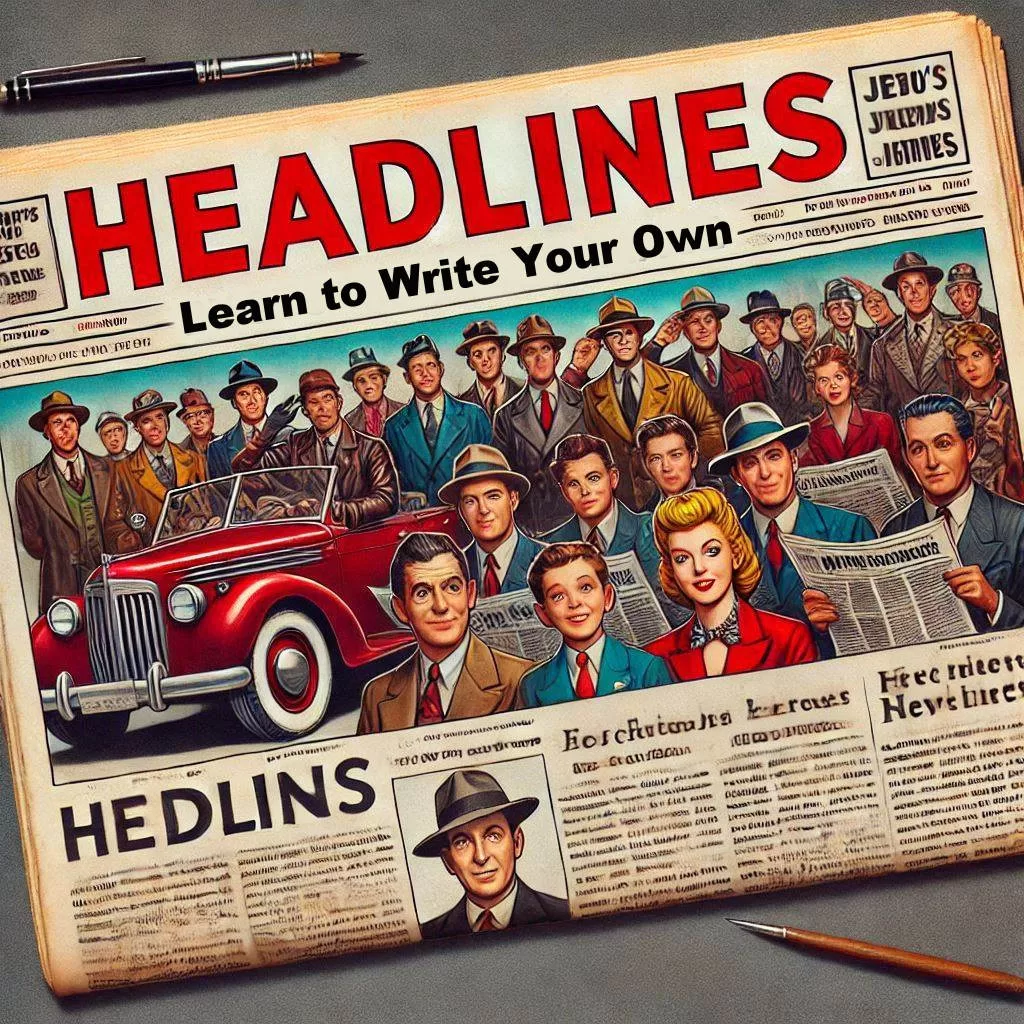
The Headline Section
There are usually three sections to a headline in a sales letter.
- The Pre-head
- Headline
- Post Head
Here is what all three elements should look like when they are assembled:
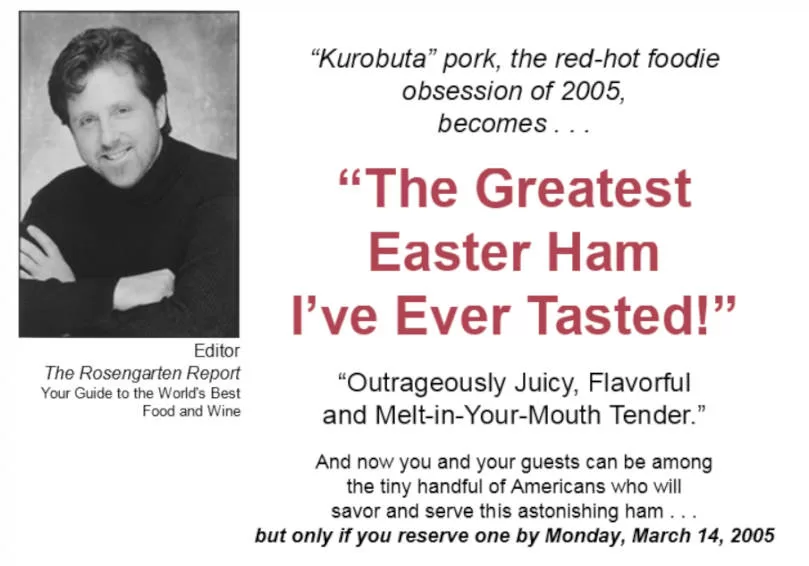
The Pre-head
The purpose of the pre-head (AKA the eyebrow or kicker) is a line of text that appears right above the headline. It is used to set the context and provide additional information highlighting a key idea which will draw readers into the headline.
So, in this section you will need to focus on the problem that your prospects are experiencing. In other words, what is the biggest problem that they have and how is whatever you are trying to sell them going to fix that problem?
Why the Pre-head Is So Effective
The reason why pre-heads are so effective and important is because it immediately let’s prospects know if the product is relevant to them or not.
The last thing you want people to do is read the entire sales letter and then have them get mad because it wasn’t for them on any level. You only want people who are interested in what you have to offer.
It Is an Attention Grabber
Another reason why the pre-head is so important is because it will immediately grab the attention of anyone who is in your target market. You immediately let them know if your sales letter is relevant to them or not.
So, immediately call out the problem in your pre-head.
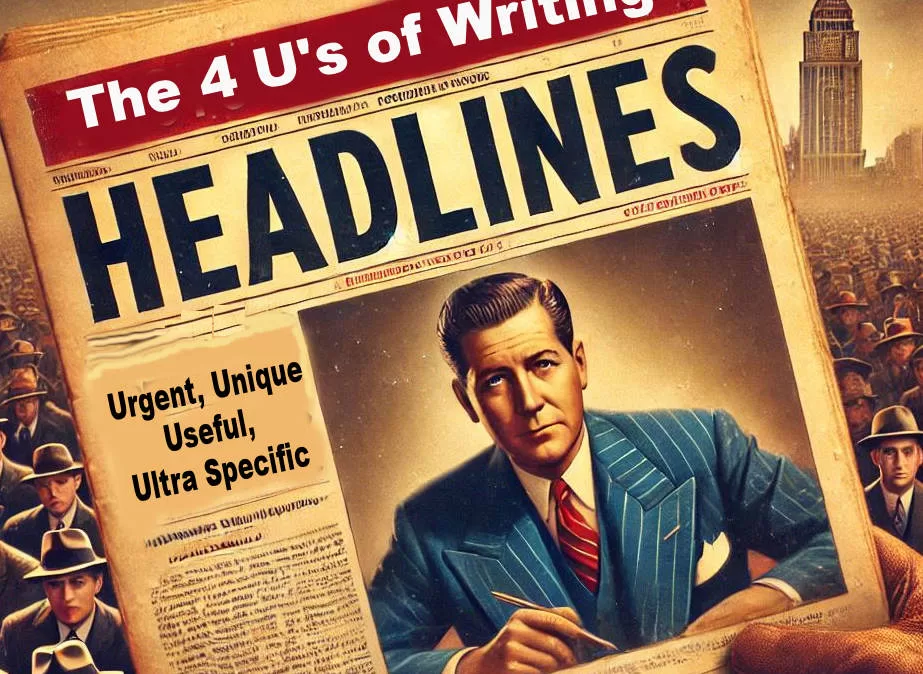
Writing The Headline
Most copywriters consider this element of a sales page to be the most important. The reason why headlines are so important is because they are the very first things readers see.
They have to be attention grabbing enough to make the reader want to read the rest of the letter. Also, it needs to communicate value while prodding the reader’s curiosity enough that they can’t resist reading more.
I know this sounds like a lot to expect from a single line of text, but that’s the way headlines have worked throughout the years.
Formulas to Make Headline Writing Simpler
There are a lot of headline formulas written throughout the years, that can make the process of writing them a lot easier. My advice is to pick one or two of them and get used to using them to write with.
The “4 U’s” Headline Copywriting Formula
In my opinion, this is the easiest copywriting formula to use and I’ve used it a lot over the years to write my headlines in blog posts, email subject lines, and a host of other marketing materials.
It’s a very common way to write headlines, but it works great. Your headline should have at least 3 of these 4 elements in it that start with the letter ‘U’:
It should be Unique
Your headline has to be Useful
You want it to be Urgent
And…
Ultra-Specific
Examples of the “4 U’s” at Work
So, here are a few examples you can look at of this formula at work:
5 Email Hacks Fitness Trainers Can Use to Build a Six-Figure Business with Lightning Fast!
Become A Copywriter and Make Money Fast with Zero Experience
3 Proven Email Research Secrets for Success Coaches Who Want to Make a Killing Today
10 Ways Email Marketing Can Make Gym Owners Rich Overnight
By the way, don’t worry too much about getting the perfect headline written, because sometimes you won’t know until you use it or not if it’s a winner or a loser.
The only determining factor about whether or not a headline is a great one is your copywriting grabs attention enough to convert lookers into spenders.
Another Headline Formula that Works
I learned this one from my copywriting mentor.
B+C=I, or Benefit plus Curiosity equals Interest.
With this particular headline, the main ingredient is what is known as the “curiosity gap”. This is a concept that is used a lot in marketing and journalism.
It involves giving your readers just enough information to agitate their curiosity so that they will to want to read what you’re putting out.
You see this used a lot in publication magazines like the National Enquirer. Here are some of their headlines:
Legionnaires Disease – The Great Hoax!
Fat Cat Owns 23 Old Ladies
World War 3 is Coming!
Elvis – The Untold Story
Now, bear in mind that these are merely to get you to read a magazine. But this guide is about writing sales letters. So, how can you use the curiosity gap in your headlines?
Tease Their Curiosity with a Tantalizing Hint
To add curiosity to your headlines, provide a hint or glimpse valuable info without giving away all the details. Here’s a good example:
A Little Mistake That Cost A Farmer $3,000 A Year
In this case, the ad ran in farm magazines and was very successful. Yes, it’s kind of negative and would give a farmer a chill up his back. This tactic is called the “risk of loss” and seems to work better than a headline that claims the reader some sort of gain.
Cheating Makes You Thin
Most women will tell you that this title would make them read it. Of course they aren’t talking about cheating on your spouse, but cheating by snacking on a diet. This was written for a diet program and it was very successful in its ability to sell.
Here’s one more example:
What Everybody Ought to Know About Adjustable-Rate Mortgages
I’m not entirely sure of the origin of this headline, but if you were a first-time home buyer, you probably would be interested in reading this advertisement.
Many of the advertisements you see in magazines are actually what they call “advertorials” which means that the article is actually an advertisement instead of a mere article for you to read. (The call to action at the end of the article to get you to send for more info, would indicate this.)
How to Start Writing Your Headline…Fast
Ok, I’ve given you enough ideas on how to get started writing a headline, now it’s time to start. A lot of people will sit, looking at their blank paper on their laptops as if a great headline idea is going to float into their brains.
I don’t want you to do that. I want you do the opposite.
I want you to make yourself a little sign and tack it in front of you that reads, “Don’t Think”.
You Can Come Back to the Headline Later
Yep, just dash out a headline and move on. If you’ve done your due diligence and studied the product, the customer, and looked at related marketing assets, you should know enough to get a start on the headline.
So, get the gist of what the subject is about and move on. Later, you can circle back and rewrite the greatest headline that ever existed.
The Post Head
The post head or “sub headline” is placed under the main headline. It gives additional detail while elaborating on the headline benefits. It is basically a support message that can encourage action like getting the reader to keep reading the page.
Writing the Post Head
The post head is where you “sweeten” the headline area with something additional, like an extra big benefit that your product or service will deliver or a problem it can solve.
If your headline is addressing a solution to a problem then you can give an additional benefit that goes above and beyond the benefit the headline has in it.
So, if you are selling a weight loss product announcing a benefit like losing weight in the headline, you post head could say something like, “…And you can cheat on some days and still lose weight…”
So, you can have a side benefit to the solution.
Not only that, but you can sometimes have an unrelated benefit to the post head, like…” And you won’t break the bank trying to lose weight.”
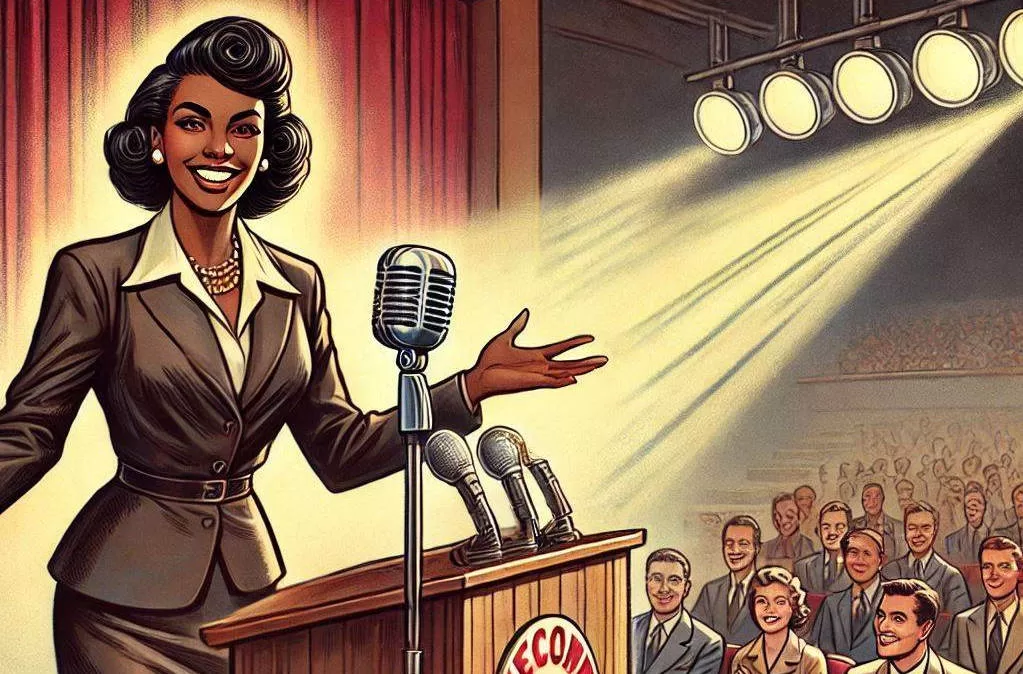
The Introduction Section
When you’re writing a sales letter, remember it is a letter. You want it to read and look as much like a personalized letter as you can. You want a greeting that is specific to who you are writing to.
“Dear Fellow Entrepreneur,”
“Dear Homesteader,”
“Dear Gun Owner,”
You immediately want to call them out and reinforce the idea that you are talking directly to them. So, the main idea is to make your readers feel as if you are talking directly to them.
Introduce Yourself with Style
The next thing you’ll want to do is introduce yourself. You can easily say something like, “Hello Fellow Gun Enthusiasts, my name is Nancy Nice…”
Or, if you’re sending an email, you can include their name very easily, because most email platforms will let you automatically insert a person’s name into the message.
“Hello Joe,
My name is Mark Elmo Ellis, and I want to share some vital information with you about your pet’s health…”
As you can see, there is nothing Earth-shattering about writing these introductions. So, put your name in it and keep it simple.
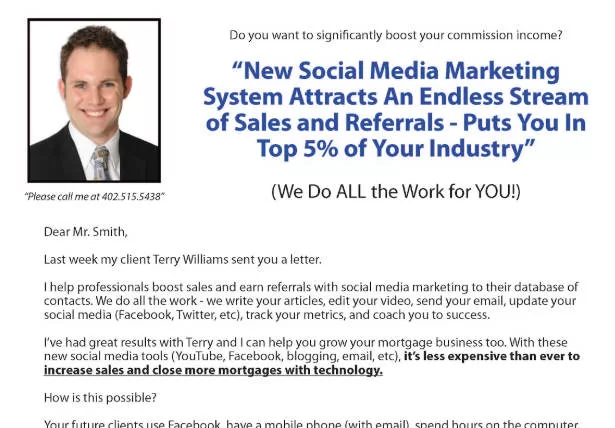
A Picture Adds a Pile of Authority
There are a lot of different ways you can format sales letters. If you want to increase your authority and make it more real to your reader is to include a photo of yourself.
But don’t just slap any kind of a picture of yourself onto the letter, put a professional looking photo graph on it.
Here’s a good example:
A great way to really nail down that you are an authority or expert is to have a photo of yourself teaching to an audience. As a matter of fact, you don’t have to show the audience, just show yourself in front of a screen giving a PowerPoint presentation.
Having an image of yourself teaching from a stage will give your readers the idea that you are a specialist and an expert.
You Don’t Need to Do This for Every Sales Letter
If you are selling something like socks, you could have an image that is relevant to what you are selling. But if you’re selling a consulting service, or hyping yourself as a financial consultant, then a professional image is what you will need.
Make Your Image Casual Only If…
You may see images of individuals in casual clothes in a little more relaxed setting. However, these are individuals who have been in their niche for years, and everyone knows them. In other words, they have a rock star status and can get away by looking casual.
One of my favorite copywriters is John Carlton, and he is recognized as a giant in the direct response copywritng realm. In almost every picture I’ve seen of him, he is wearing a Hawaiian shirt.
But in his case, he is so famous amongst copywriters, that he is recognized for wearing that attire. Also, most of the pictures of him I have seen are casual shots, but he still has images of himself standing in front of whiteboards like a teacher, he just has Hawaiian shirts on when he does that.
It Does Matter Who You are Seen With
Getting your picture taken next to a famous person, is another great way to magnify yourself as an expert in your niche.
John Carlton establishes his authority is by including images of himself alongside renowned copywriters like Gary Halbert.
Another famous copywriter, Dan Kennedy, (who, by the way, almost always wears a coat and tie) has big seminars about marketing and invites famous people to them like Gene Simmons of Kiss, fame. I used to get Mr. Kennedy’s newsletter, and he would tell you to do this.
He would have a time at his seminars where you could get pictures taken with these celebrities. He would also tell you to use them in your marketing materials to promote the fact that you’re an authority in your niche.
So, if you can get an image of yourself with an authority in your niche, do it.
Note: I don’t know about legal stuff concerning the use of someone’s image in your marketing materials. Always ask if it would be OK for you to use it before you do it, just to stay on the safe side.
Please Use Some Common Sense with Images
A lot of this information I’m giving you is subject to who and what you are writing about. If you are writing a sales letter about financial stuff, of course put yourself or the person you are writing for in a business suit.
If you were selling surfboards for Ron Jon’s Surf Shop, then of course get a picture of yourself on a beach in surfing attire with your surfboard. You must constantly get into the skin of your reader’s or target audience.
So, you need to think and be flexible with what I’m telling you. Stand back for a second and think, “Hmmmm…I’m selling tractors to farmers…Perhaps a three-piece suit would make me look like an authority.”
No, wear something that reflects the kind of people who you are writing for. If you are dealing with farmers, wear something they would feel more in tune with. But look clean and professional looking at all times.
Here’s a good example of what I mean…

Ok, it’s a joke from the Red Green Show. But it’s actually not a bad idea for a guy in the septic business.
Using Your Expertise to Add Authority
Another thing you can do to add authority to your sales letter is to brag.
There, I said it!
If you can, write about how long you’ve been working in the industry and any kind of experience you’ve had at it.
If you’ve never worked in a particular industry, you can still highlight any successes you’ve had in an industry or how much you’ve used a product.
So, at the introduction you could have something like:
“Hello fellow Trombonists,
My name is Mark Elmo Ellis, and I’ve been a professional trombonist for over 40 years and I know quite a bit about trombone slide lubricants…”
I actually used that in an introduction I wrote for a trombone slide product called Super Slick. In this case, I could use this in an online sales page for the product to establish my experience and knowledge with the product.
Using Can Be Just as Good as Doing
If you are promoting a product and you don’t work in the industry you are writing about, you can talk about your personal experiences with a product or service.
For example, I’m not in the sock industry, but I could write and excellent sales letter for the Darn Tough sock company. Whenever a special event is on the horizon and someone asks me what I want for Christmas or my birthday, I tell them, “Get me Darn Tough Socks!”
I’ve been wearing them for years and love the company, so it would be very easy to write about my experiences with them. But in this case, I would tell the readers how long I’ve been wearing them and anything else that would promote these products.
Using a Stand-In as an Authority
If you’ve never worked in this industry before, you can use a stand-in person in your copy.
In other words, let’s say that you’re writing a sales letter for a financial advisor or for their services, then you would write your sales letter as if you were them. You would get the information from your client about their experiences, education and successes and use that to build authority in the sales letter.
(There will be more on using a stand-in or proxy later in this guide.)
A Quick Recap of How to Establish Authority
So, if you want to establish authority in your sales letters, use these assets:
- Personal experience(s)
- Celebrity images
- Professional image
- Relevant education
- Authority figures
- Professional images
- Experience
- Creating product
- Years teaching in the industry
- Awards
- Certificates or licenses
- Famous clients serviced
- Publications written (Best sellers are a plus!)
Don’t Brag About Yourself Too Much
You do not want your relevant authority section too long, just keep it a few sentences long. I’ve read some really long sales letters where the authority section is almost a page long. But a short paragraph be enough.
Example:
If you don’t know me already, my name is Tom Jones, and I’m a former data analyst with two of the world’s largest global banks, Wells Fargo and Mercantile. I’m also the bestselling author of the book, “How to Make Big Money in Trading Global Currencies”. And if you have any of your money in the big banks right now, I have some vital information you need to read.
You don’t need to put a lot into this, just establish why the reader should pay attention to you or the person you are writing for and move on.
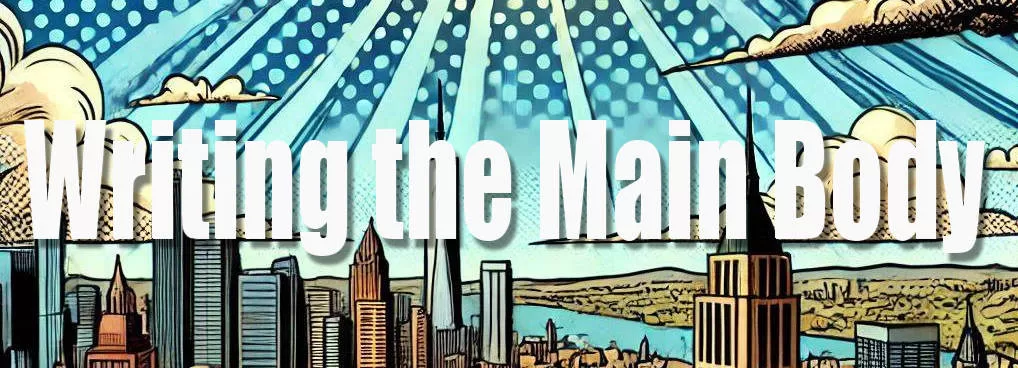
The Main Body Section
Now we are going to get into the meat of your sales letter. This is the part where you will be learning how to write the different sections of your sales letter that do most of the heavy lifting in the sales process.
Depending on the kind of product or service you are selling you will use some of these sections and sometimes you might not.
However, let’s assume you are selling a something that needs all of these sections in order to make the sale or conversion. That way you’ll know how to write them if you do need them.
Relevance to the Reader Section
This part is where you are showing the reader that you are like them. It is in contrast to the previous section wherein you established yourself as an authority.
Basically, it’s saying to them, “Hey, I’ve been in your position and know how you feel.” You want your readers to feel like you are on their level and you are someone they can relate to.
Tell a Story They Can Relate to
In this section you are basically telling a story.
The story is that you (the person they are reading about, or the person you are representing) is the present and that’s where they want to be. And your past situation is where they are at right now.
Example:
You used to have toenail fungus on your feet. Now, you have beautiful toes and nails that shine like the top of Mt. Everest on a sunny day.
Currently, you’re enjoying your sparkly, well-groomed toes, but your clients are now in the position you once were—feeling ashamed of their toenails and wanting to hide them from the world.
(I’m being a little dramatic here, but you get the idea.)
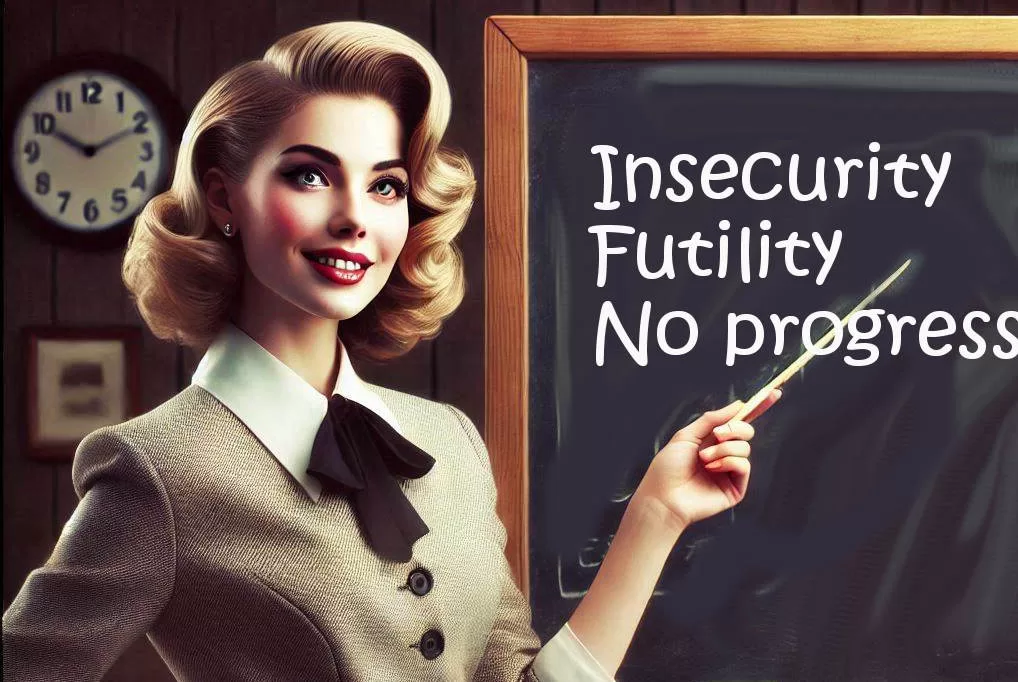
Three Points You Need to Make
So, there are three points you need to make in this section:
Lack of Progress – You understand how and why they are stuck in the condition they are in.
Doubt or Insecurity – Your audience doesn’t know (or did not know at one time) how to solve the problem and get out of it. And they don’t know what steps to take in order to fix the problem.
Ineffective Futility – Your readers tried fixing the problem and it didn’t work, no matter what they did.
You want to magnify their efforts as an epic failure, something like this:
“I know exactly what it is like to have fungus all over my toes. They cause your nails to grow thick and your skin to turn black around your nails. I spent all kinds of money on any treatment I could get my hands on, only to wind up with the fungus getting more aggressive.”
In this section, you will want to communicate the negative impact of being unsuccessful in their attempts to fix the problem, You want to point out how stuck they are and feel from being in this position and not knowing how to fix it.
An Optional Version You Can Use
You might need a different version of this, written as a case study from a past client or a customer’s perspective, rather than writing it as if you experienced the problem yourself.
Example:
“Larry approached me with a severe toenail fungus problem and had tried countless remedies to no avail. He attempted various treatments, but nothing seemed to work.”
In this case, for some reason you cannot use yourself as an example, so you will need to use a stand-in or substitute to that your readers can relate to as a living example of how their problem can be solved.
Does This Sound Familiar?
After you’re done writing the part where you are telling your readers that you used to have their problem, you want to have a section that lists the problems you had yourself.
To make it easy, you could list your problems out first like this:
- You couldn’t solve the problem
- Ignoring it in the hope it would get better
- Using all sorts of expensive methods that did not work
- Taking advice from friends and relatives that were ineffective
- Trying to solve the problem yourself
You don’t have to use all of these, but it will give you a visual on how to write this section.
“I tried using all kinds of expensive bottled solutions, but the fungus got even worse. So, I called my cousin the foot doctor and he told me to soak my feet in chlorinated water. All that happened was the skin on my feet turned white…”
Or if you were writing for the financial industry:
“Like many of you, I lost a lot of money listening to the bad advice of “award winning” brokers. But that only caused me to invest on my own wits, which became a massive loss in my portfolio.”
In this case, you are using a stand-in for this section of writing:
“Joe poured a lot of money into using AI for his company, only to find out that the prompts that he was using were not written for his company’s present situation.”

A Mind Trick You Can Use
So, you really want to spell out their problem to them in the sales letter. There are a couple of mind-tricks you can use to really make this section very effective.
Sometimes when a person can’t find a solution to a problem, they will put in on the backburner of their mind. They would rather try to avoid thinking about it because they hate feeling helpless.
So, the problem will linger in their brain until it is somehow revived in their head. Then, they somehow stumble upon your sales letter and it details very specifically what they are experiencing.
Immediately their eyes are opened because there you are, giving them the details of exactly what their problem is point by point.
And then, “Boom” they think, “Hey, this person really gets my problem so well, it’s almost like they are spying on me!”
Of course, this draws them even further into your message hoping that this time, you’ll be able to solve the problem for them.
Do you see how that would work?
And if you do a good job of pointing out these problems they will actually feel bothered by this problem and see it see it everywhere they look.
It will be very difficult for them to put down your letter an completely forget about it.
Amplify the Situation
And to make it worse, you can amplify the situation by bullet listing all the problems it causes, like this:
- Their spouse or partner are grossed out by the sight of the toenails
- Their socks get ruined by their thickened toenails ripping them up
- People notice them when they are at the beach
- The prospect of the fungus getting worse which may require surgery
- They have to use special tools to scrape of scabs of skin around their toes
So, you can expand the problem like this by describing it in bullet statements.
Use Bullet Points to Boost Your Sales Letter
Bullet points are important to use in your sales letters, so the next section you will want to have in your sales letter are these “digestible chunks” of important points of sales letter.
A few other reasons why they are important is that they:
- Clearly restate benefits and features in your copy
- Improve readability for people who skim content
- Add visual space and make the content look less intimidating
- Organize the content and guide the reader through the key points
- Persuade the reader more by succinctly going back through the benefits and features
- Retain information for the reader by reminding them of the important points
As you can see, bullet points are an important part of your sales letters. As a matter of fact, I just used bullet points to teach you about them!
A Few Bullet Statements Are All You Need
You don’t have to write a lot of these statements. If you can nail down 3 real good ones that will make an impact, then that’s all you need. However,
if you need to you can go with 5 or even 7 of them. But only write them if they make a good point, don’t just put them in there for filler.
There’s an old saying, “Less is more.” And that’s very true with copywriting. You don’t need to overdo it unless it is absolutely necessary.
Put Your Best Bullets First
You want to list your most powerful bullets first, because they are usually the ones skimmers will read first.
If you have a longer list of them, try to save a powerful one for last because people who skim will look at the last one in a list usually.
The Key Things You Should Use Bullets For
I know that I expounded on why you should use bullet points, but here are the points you need to focus on in a sales letter:
- Disadvantages that may have led you to this problem which may not have been your fault
- Flaws of other solutions
- Bad things that happen because you could not solve the problem
One of the biggest problems with people who suffer toenail fungus is the fact that it creates problems in a person’s social life. When you write your bullet statements, you must make them as real as possible.
So, try to make them in the first-person sense if you can as if you were talking to someone real about your problem.
Don’t say:
- Societal problems occurred in my life
Say it like this:
- I was embarrassed to go to the beach because people would stare at my toes
Don’t say:
- Clinical studies have found that it could spread to other parts of the body
Say:
- I had nightmares it would spread through my body
You want your bullet points to say it as simply as possible, starting like this:
I did…
I had…
I was…
I used to…
Make as real as possible and if you are writing about someone you know who had this problem (like a proxy or a substitute) write it like this:
He did…
He had…
She was…
She used to…
The Mind Trick of the First-Person Tense
When you say something like:
“I did everything I could to get rid of my damning toe fungus…”
It is what is known as first-person tense. It is super powerful, and the reason why it works so well is because if you say, “You did everything you could to get rid of your damning toe fungus…”
Some of your target readers are going to say, “Hey, it’s not that bad…” because they don’t like having the finger pointed directly at them.
So, when you start with:
“I had…”
“I did…”
I felt…”
A lot of readers will feel so much better.
The Problem – Solution Lock
Believe it or not, it is far more pleasurable to an audience to hear that someone else is experiencing the problem than them.
This is just one of those copywriting mind-tricks that works really well and some copywriters call this the “problem – solution lock”
(We’ll get into this more later on when we talk about the problem – solution key.)
For some weird reason if you point out the problem as if it is YOUR problem rather that THEIR problem, then it’s not that big of an issue.
It is far easier for them to agree with you about their problem if you are the one with the problem.
The Lock and Key Relationship
So, to recap, we’ve presented the problem without making the reader feel too threatened by it.
But if you consider the problem the “lock” that they have accepted, then you can consider the answer to that problem the key.
Pretty easy to understand so far, right?
Now we’re going to work on getting them to accept the other element, “the key”.
Sometimes when a person is reading about all these problems and then you start listing how your solution will solve the problem, a light goes on in their brains.
That light is saying, “Here’s how you can fix all these problems we just listed one by one.” And it will almost seem as if the reader thought up the solution themselves.
And the ultimate end of this thinking is, “Of course I need this solution!” as if they thought it up themselves.
Now you can see why this is called a “Lock and Key Relationship”.
Commercials on TV Are Great Examples
You can see this over and over again on TV commercials, especially the late-night ones.
Example of a Lock and Key Commercial I Saw
My favorite one is about an organizer for plastic bowls. The commercial details a house wife putting away one of the hundreds of plastic bowl containers into her cabinets.
The cabinets are loaded with them and they look like a mess. When she opens the cabinets, they are so crammed in they all fall out.
That’s the lock.
As the commercial progresses they show more problems caused by this situation.
And then they show the Handy-Dandy Plastic Bowl Organizer by the Dork-o Company can easily solve the problem.
And there is the key.
Most People Will Accept It
But as insane as that sounds, there are a lot of people who will accept this premise.
Some guy will watch this commercial and see the bowls fall out onto the lady’s head and say, “Yep, that happens to us all the time, doesn’t it, Agnes?”
And when they see the solution, they automatically say, “Hey, we need that. Get out the credit card!”
(We’ll talk more later about the “key” part.)
But Then It All Changed…
When you write your subheads for each section of your sales letter, keep in mind that each subhead is there to propel your reader onward to read more.
One of the most important subheads you can have is the one wherein it mentions the earth shattering change caused by the key solution.
So, you could easily write, “But Then It All Changed”
Or you could write,
But Then My Friend Told Me A Secret That Solved My Problem and Saved My Life!
Talk About Your Revelation
Now we’re at the section of your sales letter where you’re going to talk about how things changed for you.
Remember the “key” we were talking about? Well, this is it.
This is what transformed you from being like them with a problem that they couldn’t solve to a happy person that has the solution and has been set free from it.
The Ahh-Ha! Moment
When you think about your story, think about how you found the solution for your problem.
I want to remind you that if you are ghost writing this sales letter for a client, ask him or her what was the moment they found the solution.
So, when you’re ghost writing, you can say it like it happened to you because you are assuming the role of your client, right?
If you are writing for yourself, try to think of the eye-opening moment you found the solution.
In any case, don’t lie about it. Be as honest as you can.
But you want to have an, “Ahhh-Ha!” moment in your copy.
This is the moment when you got the solution to the problem.

Another Sales Letter Mind Trick That Works Great
The best way to present this moment of revelation, is when you found the solution by mere happenstance. You had a lucky break and just happened to stumble upon the problem.
And the reason why this mind-trick works so well is because it takes no skill, brains, or good looks to ACCIDENTALLY OR LUCKILY stumble upon the solution.
If you told say that you had a degree in molecular biology and did years of experiments to find the answer, then in a roundabout way you are making your readers feel inferior.
But if you said that you stumbled on to the answer by accident, then anyone could do that, right?
Remember, we want to them to get into our shoes from our perspective and if they can feel as though they could have accidentally found the solution, they will fell like they can relate better.
It’s a Short Cut They Can Relate To
When you hand your audience a lucky answer like this it also makes them feel like the solution you gave them is a shortcut.
They will feel like they were lucky like you, because they didn’t know about the product and now, they are getting it from you like it was a gift.
And even though you never stated it in your sales letter, you’re implying that the reader didn’t get the lucky break you did. However, because you were so fortunate, you’re now going to help them out too.
See how that works?
Why Does This Work So Much Better?
In a way, this is where you can kind of set your product against its competitors. But it does not have to be against competing products, it can be something that you bought that didn’t work or a home remedy that didn’t work. You could even mention how you tried to ignore the issue, but don’t talk about the solution yet.
And once again, you can use bullet statements to talk about positives and advantages of the solution without mentioning exactly what it is yet.
Remember back when we had all those negative bullets from before? Now, you’re going to take them and turn them into positive bullets.
Note: By the way, some experienced copywriters will run the positive bullets first and then run the negative ones later in the copy. It is all a matter of preference and how you want to ramp up the tension you are trying to create in the sales letter.
But for this lesson we are now going to focus on the positive ones next.
Turn The Negatives into Positives
In this section we’re going to transform the negative bullets into positive ones.
Here are a few examples of how to do that:
Instead of saying: My spouse was grossed out by the sight of my toenails
Change it to: My spouse loves the way my feet look now
Instead of: I had nightmares it would spread through my body
Write: I’m so relieved that I don’t have to worry about it spreading to other parts of my body.
Just make sure you aren’t making up different or new bullets. Try to do the opposite version of the ones you presented earlier.
Remember, this is the key, or solution section of the copy, it will be more relatable if you present the solutions to the original negative bullets.
If your readers have read the letter all the way up to this point, they will have probably forgotten most of the negative problems you presented at the onset of this sales letter. Now you are giving them solutions to things that are in the backs of their minds from the start.
The More You Put It Out – The More They’ll Want It Fixed
So, when you were at the onset of this copy the more you hammered it into your reader’s heads that this is a problem that must be solved, Now, you are going to really make them salivate when you present the solution.
Phrase These Bullets Like This…
This is kind of important, so pay attention. Phrase the second batch of bullets as a second person, future tense.
Remember when you originally presented the problems bullet-style? You were saying:
“I had…”
“I was…”
“I tried…”
“I did…”
Now you are going to phrase them like this:
“You will…”
“You can…”
“You get…”
This will make them think as if they already had the solution. If you think back to before, you were talking about a bad situation, now you’re talking about how it will be fixed.

Third Party Proof Section
This next part is the “Here’s the Proof” part and you will need 3rd party proof in this section. This part is good if you’re doing a case study or using a stand-in person instead of talking about yourself.
This is important because up to this point, you are asking them to take your word for what you’ve been telling them.
Give Them Some Proof
Screenshots of results, images of how things got better or numbers will work.
Actually, numbers are the most valid way of getting them to believe you. Anything you can do to show them an increase in numbers and have it tied to time intervals is very powerful.
So, the best thing you can do is show and increase in numbers over time. (Unless it’s weight loss! Haha Ha!)
“My daily revenue increased from $553 to $3,345 and it only took 30 Days to get to this level!”
Another version of this is before and after weight loss images that shows how a person lost weight.
Also, losing fugus or acne images work well too.
Note: With internet marketing results small numbers are actually big. For example, if you send out an email sales campaign, a conversion rate falling between 10% and 30% is realistic.
So, if you told someone that you got a 80% conversion rate in email sales, a savvy marketing person would think, “Bull crap!”
And once again, it goes back to the principle of being honest in your marketing.
Make sure that you are telling the truth. If you need to make the sales look great, have an image of your sales on a spread sheet of some kind would be more powerful and honest.
How to Make Your Numbers Look More Real
One other thing, if you give figures of how much you made or other data, then try to not use rounded numbers.
Don’t say I made $500 in one day. Say, I made $532 in a day. Why?
Because rounded up numbers don’t look as realistic.
So, don’t use rounded figures. If you actually made $500 or some other even figure then put down $497. A mere $3 is not that big of a deal and it looks more real. However, this will be up to you.
And one more thing, comparisons are a lot more believable if you have something to compare them to. So, make sure that you have comparisons in your proof or it will probably fall flat.
More Proof You Can Use
You don’t always need to have proof in your sales letter, but it would sure help. Here are a few other ways you can get proof for your products or services:
Customer Testimonials: “I was skeptical at first, but [Your Product] exceeded all my expectations. It’s a game-changer!” – Jamie R.
Case Studies: Last year, we helped [Client Company] increase their efficiency by 50% with our innovative solution. After implementing [Your Product], they saw immediate improvements and savings.
Before-and-After Comparisons: Before using [Your Product], many of our clients struggled with [issue]. Now, they enjoy streamlined processes and increased productivity.
Independent Testing: Our product was tested by [Independent Organization], and the results showed a 99% success rate in [achieving a specific outcome].
Awards and Recognitions: Proud recipient of the [Industry Award] for innovation and excellence in [Your Field].
Ranking for Internet Success: Our accounting application ranked #1 in Google’s Search Engine Results Page (SERPs)
Make Sure Your Sections Are in Order
All of these sections need to stay in order. In other words, you don’t want to have your numbers and figures section before the “And then it all changed” section.
If you have to leave out a section, that’s fine, but make sure the sequencing stays in order.
Testimonials and Reactions Section
You could have called this the “Don’t Just Take My Word for It” section. This is the section wherein you show reactions and testimonials from supporters.
Of course, these are people who like your services or products and have given you glowing reviews. (Once again, don’t fake this stuff.)
These are reviews like:
“Your dog treats have my pooch begging for more all the time!”
“I used your acne treatment and my skin is clearer than it has ever been. Thank you so much!”
“My self-confidence has increased overnight since visiting your cosmetic dental office. You have really changed my life!”
You know, stuff like that.
Emotional Testimonials Are the Best
The testimonials that are the most powerful are the ones that have an emotional edge to them.
“I’m so happy…”
“I just love the way your company…”
“My dog was jumping for joy when we tried your canned food…”
Whatever the product or service is, you will greatly benefit from emotional reactions from customers or clients.
Not only are these “after the fact” testimonials work, but the pre-emptive ones will work, too. In other words, you don’t always need to have statements that come after someone has used your product or service, you can have it before.
“I just got your Internet marketing package and I’m dying to launch it!”
“I’m sure my mother will have tears in her eyes when she sees the beautiful family pictures we had made at your studio.”
“All of my friends have used Mega-Clear acne treatment and I can’t wait for my order to arrive!”
Testimonials Will Alleviate the Pitch
Remember, emotional responses are key when it comes to testimonials. They evoke feelings of hope or a sense of resolution to a problem the reader is facing.
Testimonials are crucial because, up to this point, the reader might think they are just reading a sales advertisement. These emotional endorsements help reduce the feeling of being pitched to or sold to.
The moment they start reading your copy, they will know that they are reading a sales page or commercial.
So, you want to reduce that feeling as much as possible in your sales letter.
I remember once that I was at a home and garden show once, and this guy was selling rug shampooers.
And as he was doing his pitch on a beautiful carpet, he demonstrated how the cleaner would work by dumping coffee, tomato sauce and a horde of other top staining things onto the carpet.
Of course, the women who were present kind of gasped when he trashed it like that. Suddenly he fired up the shampooer and cleaned it all off, perfectly. Once again, the ladies responded emotionally with positive emotions and comments.
But get this…
This crowd was perfect for the salesman, because when they reacted like that, THEY WERE WATCHING EACH OTHERS EMOTIONAL REACTIONS.
Get it?
And when you watch these demonstration infomercials on TV and the crowd is reacting to a products performance, I can guarantee the audience is being led and coached by someone off screen, prodding them to react.
And this just reinforces what I’m saying here about testimonials, they will relieve the feeling in the person(s) who is being pitched that they are being sold to.
So, having these testimonials in your sales copy will help ease the idea of being sold to in your sales letters.
Gaining More Trust Through Personality
Another thing we are trying to do in these previous sections of this sales letter is trying to establish the personality behind the business. If you can’t use your own personality you could kind of put some personality into the product or service.
So, on the product side you could think of someone like heavyweight boxing champion George Foreman, of the Forman Grill commercials or the actress/model Cindy Crawford selling beauty products.
But the idea is that these personalities are projecting their personas into the products or services.
Sometimes people who are famous from selling their stuff become just as famous as an actor or actress. For example, Daryl Issacs, the “Hammer” who is a lawyer promoting his accident law firm is very famous.
4 Questions of “The Hook”
So, in order to put more personality into your copy, you need a hook. In order to get a hook, you need to answer 4 questions in your copy.
- Why Me? – Explain why the prospect is the focus of your message. What makes them the right person to hear this?
- Why You? – Clarify why you are the one reaching out to them. What sets you apart from others?
- Why This? – Identify the product or service being discussed. What is its significance?
- Why Now? – Highlight the urgency. Why is it important for the prospect to engage with this message now rather than later?
How the Hook Questions Are Answered
If you look at how this sales letter is structured, you can kind of see how these questions are being subliminally answered.
The “Why me?” and “Why are you talking to me?” is answered in the headline. The headline is pointing out an obvious problem that the reader is agonizing over.
The “Why you?” question is answered because you have somehow overcome the exact same problem yourself. You have the experience, secret, or solution to this problem that your readers will want.
In the photo and your introduction, you are displaying your values which you have in common with them. You are someone your readers can trust, because you care about the same things that they do.
When you are writing to them about their problem, in an intelligent, yet blunt manner, you are going to gain their trust. This will be powerful in their minds because they will be thinking, “Man, this guy really gets me! He understands exactly what I’m going through!”
Keep reading, because in the coming sections the other 2 questions will be answered.
Enter the Villain(s) Section
You need to have a villain in your story, someone or something that you can’t stand. So, when you are revealing all of these problems caused by a situation, person, or whatever obstacles in your way, that’s your villain.
“I bought this crap that didn’t work…”
“Those jerks who sold me that course, were rip off artists!”
“No matter what I did, that damn fungus would not leave…”
“That advice the so-called expert gave me, didn’t work at all.”
You know, that sort of thing.
And these villains, roadblocks, obstacles, problems, or whatever gets in your way that you talk about in your copy, shows what you’re opposed to.
You Will Become the Hero
You are putting yourself into a place of becoming a likeable person or a hero in your copy. By doing this, you are showing what you will not tolerate and what your preferences are.
When you talk about the negative things that you stand against, it will add a level of authority to your sales letter that you are putting up for the world to see.
And it will do so in a story format, instead of you making mere lists for your readers to look at. And the thing that’s so great about a story format is that it is what people are used to. It is a natural thing for them to want to hear or read about.
Answering Question #3 – Why Me?
Now we’re going to answer the third question in our hit parade, the “Why this?” question.
In this section you are promising to solve a problem for your readers, making yourself trustworthy so that what you have to say will carry a lot of weight.
So with the “Why this?” part, we are really talking about the product or service that we are finally, going to introduce.
But you won’t be writing about just the problem, but the transformation from where they currently are to where they want to be.
Transferring Pain
In effect, you are transferring their pain and suffering from themselves over to you who overcame the problem and transformed yourself. As you are traveling through this sales letter, you are basically investing in yourself as being the source or representative authority of this service or product.
By the time your readers get about halfway through the sales letter, your reader will be looking forward to hear your opinion on this particular product or service.
Yeah, sure, your reader could get the same information elsewhere, but they are now relating to YOU and it is YOUR version of this subject that your audience is interested in.
At this point, what YOU think matters and they are applying YOUR personal to the product or service. In their minds, this will make them think that what they are reading is rare on this subject and they may even think, “I can’t get this information from anyone else, because this guy really understands me and I can relate to all this.”
Now, he or she may not think those exact words, but those kinds of ideas are floating through the mind, and that’s exactly what you want.
Answering the “Why Now?” Question
The last question we have to answer in your question is the “Why now?” one. And of course, it answers the question of why we are talking here and now about the product or service.
As I said earlier, people love a story, so don’t be afraid to tell one in your sales copy. Go ahead and tell a story about how you failed at something or had a problem you couldn’t fix.
As a matter of fact, it’s kind of vital to talk about this extensively in your copy, because it will be a contrast and set up for how great your solution is. And that solution is your product or service.
Also, if you tell your story good enough, your prospect or reader will bring your readers to the conclusion that what you are offering is exactly what they need.
By using this tactic of telling a story rather than selling to your audience, puts them into the driver’s seat so that they feel like the idea to accept your solution is really their choice or idea.
It will also make them feel like they, on their own, wanted to buy your product because it was not you selling them, but because it was actually their ideal. And when they feel like that, you as a copywriter, have the best possible chance of converting a reader into a buyer.

The Swivel Section – Introduce the Product
This is where you are going to say the name of the product or service and introduce it.
If it doesn’t have a name, give it one.
“Now, I’m going to tell you about the incredible Fungi-Fix!”
And in this section, you should have a picture of the product. It can be a picture of the box, bottle, or if you are selling a digital downloadable product, then give it an image that represents it like a CD or DVD case, whatever.
Most of the products you see online now are downloadable products. I recently bought a music program upgrade and it took most of the day to download all of the files associated with it.
Of course, on the website they had an image of a box with the software’s name on it.
So, if you have a digital download still use an image of a box and if it already has a box, make sure you show it.
Use a Descriptive Paragraph
Next to the box, have a paragraph describing exactly what the product is. If it is CDs, put it on there. If it is a flash drive, talk about it as much as you can.
Whatever it is, tell them exactly what they are getting. If there are discs with videos on them, tell them exactly what the videos are like. If they are full color, mention it.
Tell how long they are and what kind of formats they are in. Spare no words, make it extremely detailed.
Try to Show a Positive Aspect
Also, if you have an asset like a PDF file or a video that isn’t very long, try to show a positive aspect of that.
Try to say something like,
“Yeah, the video is only 20 minutes long, but I made it as concise as possible because I didn’t want to give you hours and hours of fluff. I just wanted to give you the most impactful information possible so you can get started making money immediately!”
And if you are selling a book or a PDF file, tell them how many pages they are going to get, and make sure you display the numbers.
You want the numbers to be in their heads because anything else will add vagueness to the product. In other words, the numbers will make the product more real and tangible.
Use Bullets to Show Benefits and Features
Remember earlier when you were using bullets to call out the problems you were having and how we resolved the problems.
Now we are going to use them again to talk about benefits and features of your product. So, for each part of the product, you can use 5 to 7 bullets.
So, let’s say you are selling an online course on self-confidence. Each module or set of lessons should have at least 3 to 7 bullets that talks about each section.
Your bullets should follow this format:
- You get this______, which gives you this__________ so you get this_____.
If you can put all that into a single bullet, then you’ll have a great bullet statement.
So, if you were selling a video course on Search Engine Optimization (SEO), you could have a bullet that goes like these ones:
- You get comprehensive keyword research tools, which gives you in-depth insights into popular search terms so you get higher search engine rankings.
- You get detailed site audits, which gives you a clear understanding of your website’s performance so you get the chance to improve your site’s SEO health.
- You get access to competitor analysis features, which gives you an edge by understanding your competition so you get better strategies to outperform them.
- You get real-time analytics, which gives you immediate feedback on your SEO efforts so you get the opportunity to make timely adjustments.
- You get customizable reporting tools, which gives you the ability to tailor reports to your needs so you get more relevant and actionable insights.
See how that works?
Adding a Cash Value to Your Product
Each section or module of a product needs an element that cites a cash value directly to the product.
Example: Module I alone is worth $200.
Try to say it like this:
“The insights provided in this section could be worth thousands of dollars if applied correctly…”
So, potential rewards will really help in this process.
Another way of saying this is so you can sneak in the cash value is like this:
“The cost of learning this alone is worth thousands of dollars.”
Or you could write it like this:
“Attempting to research and learn this on your own could cost you nearly $735. Trust me, I’ve been there!”
So, anything you can do to link a high-dollar value to this information is going to be valuable in selling it.
What happens is their brains won’t actually add everything up, but their subconscious minds will gather the amounts you presented and total them up in an elusive way.
What we want is to have the reader kind of start to add up the dollar amounts they are seeing when they really start to consider buying. So, if they really start to want what you are promoting, then they will start adding up the numbers you are pumping out.
The Trick of Giving Them All These Amounts
So, after they are starting to become swayed into the idea that they really want to buy, they will start adding up these amounts in their heads.
And the reason why you will want to run those big dollar amounts out there is because at the end you will have a “price reveal”.
And that price will be significantly lower than what they added up in their heads.
So, when the pricing is much lower than what they were expecting, they’ll go, “Wow, what a great deal!”
You can see this a lot on commercials on TV.
“You’ll get the blender attachments that have a value of $50 each. You’ll also get the extra bowls that are worth $25 and the $45 DVD that will show you how to make everything from ice cream to smoothies for a mere price of…$23.99!”
And the viewer gets freaked out because they thought it would cost so much more.
If you reveal the price to the prosects WITHOUT going through all of these large dollar amounts, then when you reveal it the price will seem large.
However, presenting all the large dollar amounts before revealing the final price will make the final price appear smaller in comparison.
A Reminder on Why You Must Have Personality
Now would be a good time to remind you that you really can’t skip the personality part of this sales letter.
If you leave out the personality part and jump to the product part of this letter, you’ll have nothing to connect the product to other things you’ll be trying to sell them later.
The reason why they are buying is because at this point, they have bought into YOU as the investment. So, even if you don’t make the sale at this point, you may buy from me later on down the road because they feel that they know you and like you.
A real good example of this is “The My Pillow Guy” Mike Lindell. He infuses his commercials with his personality and if you don’t buy one of his pillows now, he has dog beds, blankets or whatever to sell you later.
And because you’ve seen him, and heard his story, you are more likely to buy later on down the road.
So, if your readers keep reading your stuff, then you’ve increased the likelihood that they will eventually buy one of your products.
So, don’t blow off the personality part of your copy, because if you don’t make the sale now, there’s a good chance it will later on down the pike.
What’s the Catch or Cost? Segment
Once you’ve introduced the product, there is almost always going to be some resistance.
So, the usual question is, “All this sounds wonderful, but what does it cost?”
If you’ve gone through the whole process of watering down the pricing the way I’ve shown you, there won’t be a “sticker shock” reaction.
When people reflect back on how much each of those high-value modules or whatever cost when you present your price it won’t seem bad at all.
As a matter of fact, they’ll wonder what the catch is.
The Answer They’ve Been Wondering About
That’s why this part of the sales letter is called the “What’s the Catch?” section. Almost every time people will ask this.
And this is what you will tell them:
“This is a special offer at a low price, but that is going to change.”
At this stage, your readers are eagerly anticipating the reveal, and you’ve intensified their excitement, creating even more tension.
Get it?
Now, you’re going to start hinting at a bonus. You don’t want to say too much yet, but you will want to let them know that it will be limited in time and quantity.
just say something like this:
“In a moment, you’ll understand why I can’t offer this bonus at such a low price indefinitely.”
And after that, you’ll want to add a line like this…
“But don’t fret too much…”
Just Another Mind-Trick
What you are using here is another mind-trick. You are running their emotions up and down which will keep them engaged.
If you remember back through this sales letter, you’ll see this tactic used over and over again
“I’m doing great now, but I used to be like you…”
“I too, suffered from foot fungus…but suddenly, I found the solution…”
So, we’re creating tension then lessening tension all through the copy.
And like I just told you; this keeps your readers engaged by taking them on a mental rollercoaster ride.
“Here’s the deal: we’re currently offering this at a low price, but that won’t last. However, don’t worry—the future cost won’t be as high as you might expect.”
Of course you can do this in a variety of ways:
“While we’re offering this at a low price now, it won’t last forever. But don’t worry, the cost won’t be as high as you might think.”
“It’s priced much lower than what my colleagues have suggested I should charge.”
“It’s far more affordable compared to other comprehensive courses, which often come with inflated prices and less usable content.”
“This is significantly cheaper than hiring me to teach you all of this in person, and that’s if I’m available.”
“It’s much less expensive than the trial-and-error approach, which could cost you money and yield no results.”
Don’t Reveal Any Pricing Yet
I want to point out that we aren’t revealing a price yet, we are just creating tension to ramp up their emotions a bit.
What we’ve done so far is establish that the value is very high before letting them know what the pricing is. And in our copy, we have increased the value as the readers go through it.
Right now, all we’ve done in this section of the sales letter is show what the perceived values are before we reveal the price.
But Wait- There’s More Section
This is the bonus section, and what’s important about these bonuses is that you want to frame it so they seem like they are specifically selected.
You do not want to offer the sun, moon and stars as a bonus.
The key to this is to NOT look like you are trying to give stuff away so that they will want to buy it. Doing so, would be kind of dumb because it would almost appear like you have to give a ton away because, you are kind of desperate.
So, we want to avoid that idea as much as possible. I mean, if this thing that you’re selling is really worth a crap, then why are you giving away piles of stuff to sell it?
Another downside to this is that you’ll only be getting those people who what to get a load of free stuff, and that is not the basis of a good business relationship, right?
I mean, if every time you sell something in your business wherein you have to have all kinds of freebies in order to make a sale, what will that say about your product.
Not only that but you’ll be recognized for giving away freebies more than you’ll be recognized for the how you are a high-valued business person.
Specifically Select Your Bonus Items
You need to have your bonuses as support items rather than freebies given to make the sale.
You don’t want your bonuses to be the reason why the reader decides to buy. All they are there for is to help push the prospect over the edge on buying what you are trying to sell.
You want to sort of cattle prod their minds to say, “Oh crap! I better get my credit card out and get this while the bonuses are still in play.”
Describe Your Bonus as a Support
How are you going to describe your bonus in a way that creates the idea that you bonus adds value?
The way you can do this is by describing your bonuses in a way that shows people how it supports the product you are selling.
First, ensure that your bonuses have a reasonable cash value. What you want in their minds is to understand how much extra cash value is being added to what they believe the main product is worth.
Similar to the product description, include a brief paragraph and bullet points for each bonus, ensuring that you establish a reasonable price tag for each.
Simply providing a picture and a name, followed by “This is worth $30,” won’t convince your audience. You need to describe the item in a way that justifies its value, so they can clearly see the added value it brings to the product.
So, how do you describe it effectively? Frame it as an integral part of the main product that adds value.
Your bonus should achieve one or more of the following:
Amplify
Enhance the main product’s effectiveness. Explain how using the bonus with the main product yields better results. For example, “If you use this alongside this part of the product, you’ll see even better results.”
Augment
Increase the product’s utility and applicability. This could be an upgrade, like an article spinner that automatically adds synonyms, or advanced knowledge on a subject. For instance, “This is ‘The Advanced Guide to X’.”
Accelerate
Speed up the results, such as through tracking sheets, checklists, spreadsheets, exercises, and worksheets. Emphasize how these extras enable faster results.
By presenting your bonuses in this way, you make it clear why they are valuable and how they enhance the main product.
So, you’ll want to explain it like that because it will make the offer even sweeter with the bonus.
The reader will think, “Wow, if I don’t jump on this now, it’ll take me more time to get finished, so I better buy it pronto!”
Reveal the Incredible Low-Price Section
Now it’s time to unveil your super-low price.
Here are numbered steps 1 through 6 and you don’t have to use them all. However, if you do use them all, use them in this order and use them only if it makes sense to.
Let’s Add it All Up
Step 1: Add up the cash values and number them. Reference all the cash value numbers you used for the course. For example:
“You get the course with a total value of ___________.”
Then subtotal the bonuses together, such as
“You get the 3 cash bonuses with a total cash value of _______.”
By placing these figures side-by-side, the brain can’t help but compare, seeing value stacked upon value. Introducing these figures early on ensures they are meaningful and not perceived as random.
If you introduce these figures later, it may seem like you are making them up arbitrarily. Presenting them early makes them appear proven and realistic.
Mentioning the Cost of Private Consultations
Step 2: Discuss the cost of private consultations to learn this material. Not everyone is accustomed to consulting fees, so figure out your average hourly rate.
For instance, if you usually get paid $100 an hour, mention that. Also, highlight the highest rate you’ve been paid, such as if you earned $5000 for two hours of work, which averages $2500 an hour.
You could say, “…based on my past earnings, I charge anywhere from $100 to $2500 an hour.”
What Would it Cost Learning on My Own?
Step 3: Explain the costs of learning this on their own. Be specific about the time investment, alternative solutions, and money lost through trial and error.
For instance:
“I spent $753.00 trying to solve this on my own,” or “I spent 8 years, 3 months, 27 days, and 11 hours on ineffective solutions.”
Additionally, share specific anecdotes, like:
“I was using Google AdWords and one day I found my credit card had been charged $7,235.23!”
The idea is to dramatize these numbers, making the value of what you’re offering seem immense relative to the price.
Be honest. Ironically, admitting your mistakes will make you appear more credible, rather than just boasting about your success.
Highlighting the Potential Value
Step 4: Highlight the potential value of the results based on the figures you shared. Reference your proof graphics or testimonial numbers. Even if you’re not currently making money in internet marketing or your specific niche, talk about your progress.
For example:
“I went from horribly smelling feet to having my tootsies smell and even taste like gardenias in just 4 days!”
It doesn’t have to be a dramatic change, but it should align with your proof elements. If you’re already successful and entering a new niche, demonstrate how you’ve doubled or tripled results, etc.
This is why including a before-and-after comparison in your sales letter is crucial—it provides additional reference points.
Expanding Business: Discuss how to grow their business to earn more and work less. If you don’t have specific numbers, you can speak generally.
Mention any savings, such as resource guides with discount links or pay-per-click deals with coupon codes. Highlight the dollar value of these resources.
Make it More Urgent
Step 5: Emphasize the urgency of acting now by indicating a forthcoming price increase.
For example, “I will be forced to raise the price once I receive results, feedback, and case studies.”
Provide a specific reason or explanation for the price hike, and be specific about the new price:
“I’m raising the price to $99.95.”
To build credibility, actually offer the product at the higher price somewhere online, like exclusively to your email list with a direct PayPal buy button.
By doing this, you demonstrate that your time-limited offer is genuine, earning your audience’s trust and ensuring quicker responses to future offers.
Now, For the Big Reveal!
Step 6: Reveal your insanely low price!
You can say something like:
“Right now, you’ll get the early bird version!”
“As part of this offer only, you won’t pay $895, you won’t pay $299, you won’t even pay $99. You’ll just pay only _________.”
Ensure that the step-down is plausible. Avoid unrealistic steps like, “You won’t pay $1000, you won’t pay $500, you won’t even pay $250! You’ll only pay $1.” Instead, price your product at a believable amount.
The goal is for your prospects to see that you’re offering a good deal, a mere fraction of the value of the product or service.
The 90% Risk-Free Section
This deal is 90% risk-free (don’t actually say that; just imply it subtly).
Add a “barb” to discourage serial refunders. Paint a picture of someone asking for a refund as an undesirable person to be.
This won’t completely stop them from asking for refunds, it but lets them know you are aware of them. For example:
“If you buy this course and use it, then want a refund and go back to being unproductive, that’s your choice.”
For an SEO product, you might say:
“If you use this SEO product and decide to return to the hassle of researching keywords and cross-referencing them on your own, I’ll happily refund your money, no questions asked.”
This adds a humorous and confident tone to your product and signals to serial refunders that you’re onto them.
Putting a Time Limit on Your Offer
Put a time limit on the offer but try to diffuse the pressure. Rather than saying, “You have exactly 30 days to try this program,” which creates urgency and pressure, say something like:
“Look, you have 30 days! Take your time!”
“You have 30 days to relax and try this product out at your leisure.”
This reduces the pressure while still setting a deadline. Another way to phrase it could be:
“Even if you take your time, you still have enough time to try the entire product and decide if you want to keep it. If you work quickly, you could see results even before the first month is up.”
“You can take 29 days to relax and on the last day start working on this. You’ll see results you’ll be happy with for the price I’m asking.”
The aim is to make them feel like they have ample time, increasing the chances they’ll miss the refund window because they farted around and didn’t get it done on time.
An Offer Has to Know It’s Limitations
This is where you’ll inform them that this is a limited offer. Remind them of the price justification and the numbers you previously shared, which sweeten the deal. This step involves taking away options to create a sense of urgency.
When you group these limitations together, they sound more persuasive by adding urgency all at once. Limitations create the need to act.
Here’s how to do it:
People often confuse urgency and scarcity, but they are not the same. We’ll discuss three concepts: Urgency, Scarcity, and Rarity. Aim to incorporate all three in your sales letter.
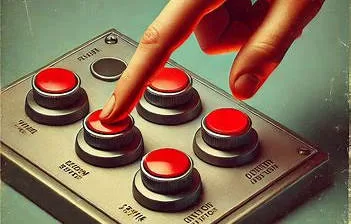
Push Hot Buttons with These 3 Limitations
Urgency:
This is a time limitation. Inform them that waiting will cause parts of the offer to disappear. Remind them that the price will increase and some bonuses will be removed. This reinforces reasons to act now.
Scarcity:
This refers to the limitation of accessibility—how few places they can obtain this offer. Highlight that your product is unique to your personal brand and is only available from you. They won’t find it for free or for sale anywhere else.
Competing courses might exist, but only your product includes your unique experiences and methods. So, this is the only place and time to get it.
Rarity
This is the limitation of availability. Emphasize how few people know and profit from these techniques or tactics. For example, “Only people in my elite group, the ‘Cult of Copy,’ were invited to attend this webinar. Now, you have access to a course that only a privileged few have had in the past.”
Ferraris are desirable because few own them. The fewer people that have something, the more desirable it becomes. With info products, nobody knows the number of products sold unless you share that information. Use low sales numbers as a positive.
For example:
“It didn’t sell just a few copies because I don’t have a lot of reach. It sold a few because I only offered it to a very select and elite group of people.”
The consequence of all this: Act fast if you want in. This answers the questions posed earlier in the letter—“why this” and “why now?”
The answers: “You can only get this from me. Not a lot of people have it. If you want it, you have to get it now because the price is going to go up, the bonuses are going away, or I’m going to pull it off the market.”
It Really Works Section
Include results-based testimonials that feature numerical data, as numbers add credibility and make testimonials more impactful.
Using Testimonials:
Focus on testimonials with numbers, as they provide concrete proof.
There are no strict rules for testimonials, but if you receive lengthy ones, extract the most compelling parts and trim them down.
If a testimonial is 10 paragraphs long, isolate the emotional elements for one section and the numerical details for another. This way, you can use the same testimonial multiple times, highlighting different aspects.
Using Testimonials from Other Products:
For new products without testimonials, leverage testimonials from other products you’ve sold.
You can state, “These are the results my clients achieved with previous products. I’ve applied the same care, usability, and value to this product.”
Even if the testimonials aren’t directly related, the numbers will still build credibility.
This approach works because it transitions prospects from an emotional response to a logical one. By the time they reach these testimonials, they should be inclined to buy, and these endorsements confirm that the product genuinely works.
Here’s What You Get Section
In this section, you’ll reiterate the main problem and the promise of a solution.
Here are some iterations of this at work:
Main Product Value: “You’ll receive the main product, which has a total cash value of ___________!”
Bonus Value: “Additionally, you’ll get bonuses worth a total cash value of _____________!”
Limited-Time Offer: “Right now, for a limited time, you can take advantage of the special low price, which is _________% off the regular price.”
Risk-Free Guarantee: “Plus, there’s no risk to you because the offer is guaranteed.”
As you can see, this part serves as a recap, emphasizing the incredible value and urgency of the offer.
The Call to Action (CTA)
This section has three parts: Emotion, Logic, and Fear (optional). Using all three can address the different types of buyers. Present them in this order to engage the easiest prospects first, moving to those who are harder to convince.
Emotion:
This is the desire-based close. Appeal to their gut feelings and intuition, reinforcing their emotional connection to your product. For example:
- “You know you want this… Trust your gut, your instincts, your intuition. Has it ever steered you wrong? Listen to my customers—they don’t regret it and neither will you. You’ll be amazed by the results.”
Be explicit in your call to action. Tell them exactly what you want them to do: “Click Buy Now!”
Logic:
After addressing the emotional buyers, switch to logical arguments. Highlight the rational benefits, savings, and value, providing a reasoned argument for why purchasing is a smart decision.
Fear (Optional):
Finally, use fear to engage those who are hardest to sell. Emphasize what they stand to lose if they don’t act now, creating a sense of urgency and the fear of missing out.
Ending the Letter:
To give the impression that the letter is concluding, thank them for reading and express your hope that they enjoy the product. Include a casual photo of yourself, contrasting with the formal one used earlier. This personal touch helps them feel connected and trusted, reinforcing the honest, intimate side of your message.
Personal Touch
- If you shared personal admissions or mistakes earlier, this casual photo underscores that bond.
- A photo of you in a relaxed setting, such as sitting on your porch, supports the message that they are now part of your inner circle.
While it’s not critical to change the photo, doing so can subtly reinforce the perception that they know you better, enhancing the trustworthiness of your message.
Final Note: Ensure that both at the beginning and end, when you mention your name, you include a photo to help them identify with you more.
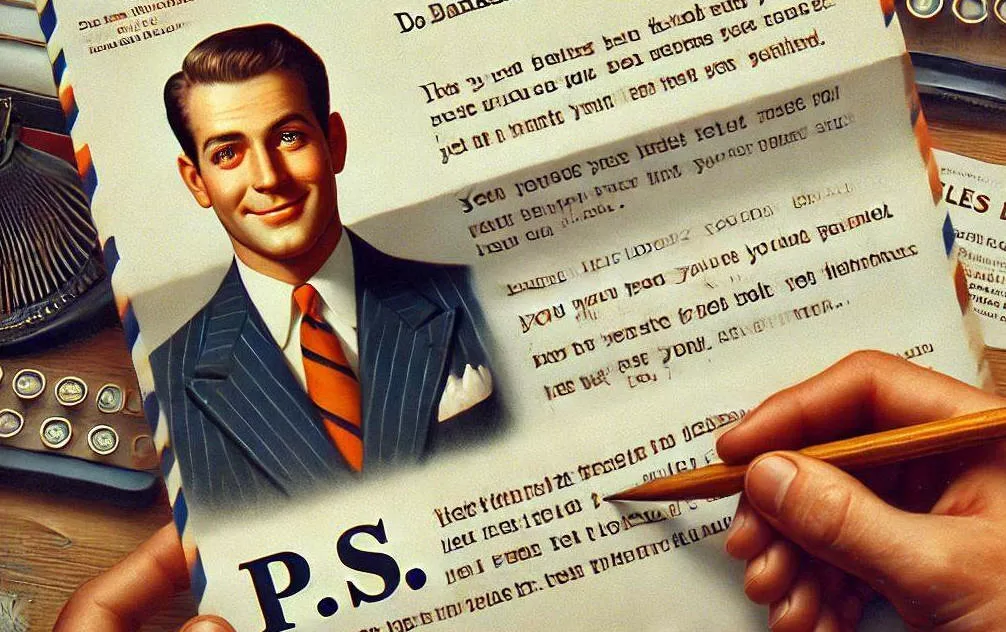
Post Script Section
Note: Remember, it’s P.P.S., not P.S.S. Many copywriters make that mistake.
The Second Call to Action
This is logic-based, aimed at those still on the fence. These prospects need logical, reasoned arguments to justify their decision.
Reiterate the justifications you’ve already provided:
- “You’ll save money if you buy this now, because the price is only going to go up.”
- “You’ll get bonuses that won’t be available forever.”
- “There’s a guarantee that makes this deal risk-free.”
- “I’ve shown you proof that it really works, and I’ve provided client testimonials.”
Encourage them with: “So if you think you’re ready for this, it makes sense to get it right now. Click Buy Now!”
This logic-based close reminds them of all the practical reasons to make the purchase.
The Third Call to Action
This is fear-based and optional. It addresses the hardest prospects to convert by emphasizing what they stand to lose if they don’t act now.
Fear doesn’t have to be evil or mean. You can use a “softball” or “hardball” approach:
Softball Version: Highlight that things will stay the same if they don’t buy.
For example: “Your smelly feet won’t go away if you don’t use this product.”
For an internet marketing product, you might say, “You’re not going to make any money, you’ll still be at your day job, and you’ll have to mess around with IM in your free time.”
Hardball Version: Emphasize that things will get worse.
For example: “This opportunity will come and go, and you’ll waste more money searching for a magic bullet instead of creating value and making money.” Urge them with: “Don’t let that happen to you, take action now before the price goes way up or it’s off the market. CLICK “BUY NOW!””
Use the softball version first to build up to the hardball version for a more powerful impact. If using both, start with the softer approach.
Leveraging Testimonials
If you have “before” testimonials showing worse conditions prior to using your product, repeat them for emphasis. For example, “I lost $2000 trying to learn pay-per-click. If I had just bought this course, things would have been different.” This resonates as readers recall the testimonial.
The fear-based close is highly effective and should be used to drive home the urgency and importance of acting now.
Conclusion
When you use this guide to write your sales letter, keep in mind that you don’t have to use every section I have presented to you.
For example, sometimes you will need to use the “relevance to the reader” section, and sometimes you won’t. You have to do this based on what your gut is telling you.
Please Remember This: I told you before that you can take out certain sections of this sales letter. However, do not change the sequence. Try to keep this copy in the same order as it is presented here. Just remove the sections you don’t want without changing the order of the sales letter parts.
If you are merely selling an affiliate product, take a look at what some of the best-selling affiliate sales letters look like and use only those.
This guide has presented you with a long form sales letter that you can use and modify at will. So, don’t kill yourself on every single sales letter you write.
However, it would give you a lot of practice in the long run.

MARK, this is GREAT.
I will keep it and use it to get more customers.
Would YOU like to reach even more people?
Let me refine your copy for you.
Whenever I see your name – I read what you’ve written because I know it will be useful to me.
YOU KNOW you’re a good copywriter.
Your sales figures are brilliant.
I think you could be even better if you let me tweak your text.
Your voice won’t change; your message will be even clearer.
If you agree, may I put your original text and the refined text on my linkedin page as a post?
Also on my instagram page?
This would increase your exposure and help me as I need examples of my work to attract new clients.
Sue, I write all of my own copy on this site and I don’t use AI to write the posts. (Except for grammar and spell checking.) But thank you so much for your offer. God bless and keep on writing, my friend!